235 Carlaw Avenue, Unit 1
Toronto, ON M4M 2S1
FILE: CAP00046146-01-E-Printer QRG Refresh_REVISED
SIZE.indd
CLIENT: samsung (it)
JOB No.: cap00046146
ACCOUNT: michelle
LIVE: None
TRIM: 20.4" x 17"
BLEED: 20.75" x 17.25"
LINE SCREEN: 150
BUILD DATE: 10.24.13
BUILD OP: lauren
REV DATE: 01.23.14
REV OP: lauren
SAVED @: 1-30-2014 10:01 AM
ITEM: None
PICK UP DOCKET(S): None
NOTES: None
CAMPAIGN: None
GettyImages_78354579_edit.psd CMYK, RGB 431 ppi 69.47%
StarProgram_Logo.ai 15.64%, 28.93%
samsung_modified_c.eps 36.19%, 21.33%
ENE_prt_v_c.jpg CMYK 634 ppi 47.31%
CLX-9201NA_001_Front_White_Thumb.psd CMYK 147 ppi
48.71%
Samsung_NBX_LockUp_030813_NO_Aircon_Emb.ai 37.07%
C410W_012_Front-Over_Ice-Gray.psd CMYK 5086 ppi, 5074 ppi
5.9%, 5.91%
C460FW_001_Front_Ice-Gray.psd CMYK 4506 ppi, 4505 ppi
6.66%, 6.66%
visual_0_0.psd CMYK 281 ppi 25.58%
Samsung InterFace (Regular, Bold Italic, Italic, Bold), Samsung Imagination Modern (Regular), Helvetica Neue (35 Thin, 55 Roman, 57 Condensed, 47 Light Condensed, 65 Medium)
PRINTED @: None
OP: PR:
Cyan, Magenta, Yellow, Black
REMOVE GUIDELINES @ DISKLOAD None
PASS:
7
GALLEY:
1
Black, C=0 M=0 Y=0 K=10, C=0
M=0 Y=0 K=60, C=0 M=0 Y=0 K=80,
C=0 M=100 Y=0 K=0, C=100 M=0 Y=0
K=10, PMS 286 C, PMS 431 C, PMS
Cool Gray 5 CVU, Table Fill Color-Row,
Table Stroke Color-Column, Table Stroke
Samsung is a fast-growing printer manufacturer and the number two
printer company worldwide.
1
Our innovations and designs have won us
many awards for performance, innovation and eco-friendliness, all of
which, when combined with Samsung reliability, presents solutions
customers can grow with.
SAMSUNG MOBILE PRINT APP
•
Print JPEGs, PDFs and Microsoft
®
Office
®
documents directly from
a mobile device.
• Scan from MFPs directly onto mobile devices.
• Free download for iPhone,
®
iPad,
®
Android, or Windows
®
phone-based devices.
• True B2B support including Job Accounting and Secure Print.
ECO FRIENDLY
• Eco Mode and Easy Eco Driver save toner, paper and money.
• Low power consumption, all Samsung printers have earned
Energy Star
®
certification.
• Toner cartridge recycling through the Samsung Takeback
and Recycling (S.T.A.R.) Program.
DESIGN INNOVATIONS
• Samsung has won many awards for performance, innovation
and eco-friendliness.
• Easy-to-install accessories and toner.
•
Easy-to-navigate colour touchscreens and intuitive compass design.
• Small, light and quiet.
TAILORED SOLUTIONS
•
Open architecture with built-in enhanced security for customizable
solutions for any vertical applications.
•
Third-party solutions.
•
CounThru™/Pro/Enterprise billing solutions.
•
SmarThru™ Workflow document solutions.
WARRANTY
We offer a 1-year parts and labour warranty standard on most
printers. Samsung also offers extended maintenance contracts.
Additionally, authorized Samsung parts are available to your
service department.
PRODUCT SUPPORT
We’re here when you need us. Our excellent technical support
is available on all Samsung printers and MFPs.
The Samsung Takeback and Recycling Program is a free toner
recycling service, and is a joint effort between Samsung and the
USPS. Every returned empty cartridge is safely and responsibly
recycled; they are never incinerated or sent to landfills. For more
information, visit samsung.com/ca/star.
WWW.SAMSUNG.COM/BUSINESS
Product Support: 1-800-749-0205
© 2013 Samsung Electronics Canada Inc. All rights reserved. Samsung, CounThru, and
SmarThru are registered trademarks or trademarks of Samsung Electronics Corp., Ltd.,
used with permission. Google and Android are registered trademarks or trademarks of
Google Inc. Microsoft, Microsoft Office, and Windows are registered trademarks of Microsoft
Corporation in the United States and other countries. iPhone and iPad are trademarks of
Apple Inc., registered in the United States and other countries. Specifications and designs are
subject to change without notice. Non-metric weights and measurements are approximate.
All
brand, product, service names and logos are trademarks and/or registered trademarks of their
respective manufacturers and companies. See samsung.com/ca for detailed information.
PQRGEN114
SAMSUNG Toner Recycling Programme
samsung.com/ca/star
A solution for every situation.
SAMSUNG
PRINTERS
AND MFPS
SyncThru™ Admin 6
Outstanding Network Device
Management Solution
CLP-680 Series
Outstanding A4 Colour
Printer for Small Workgroups
CLX-6260FW
Outstanding A4 Colour MFP
for Small Workgroups
Samsung Mobile Print 1
Outstanding Mobile Print App
ML-5512ND
Outstanding A4 Monochrome
Printer for Large Workgroups
ML-6512ND
Outstanding A4 Monochrome
Departmental Printer
Samsung Easy Eco Driver
Outstanding Achievement in
Innovation
CLP-775ND
Outstanding A4 Colour Printer
for Small/Mid-size Workgroups
ML-5512ND
ML-6512ND
2011
. . . . . ...... .. . . . . . ...... .. . . . . . ...... .. . . . . . ...... ..
Models C410W CLP-415NW CLP-680ND CLP-775ND
Functions
Technology Colour Laser Wireless Printer Colour Laser Single Function
Print
Print Speed 18/4 ppm in A4 (19/4 ppm in Letter) Up to 19/19 ppm in Letter Up to 25/25 ppm in Letter Up to 35/35 ppm in Letter
First Page Out (From Ready) <29.5 seconds <16 seconds <17 seconds <11 seconds
Print Resolution
Up to 2,400 x 600 dpi effective output
(600 x 600 x 2-bit)
Up to 9,600 x 600 effective dpi Up to 9,600 x 600 effective dpi Up to 9,600 x 600 effective dpi
Processor 300 MHz 533 MHz Dual Core 600 MHz Dual Core
Memory (Standard, Maximum) 32 MB / 32 MB 256 MB / 512 MB 384 MB/896 MB
Print Language SPL-C
PCL5C/6, PostScript 3, PDF v1.7, SPL-C PCL5C/6, PostScript 3, PDF v1.7
Max. Duty Cycle 20,000 images
Up to 40,000 pages per month Up to 60,000 pages per month
Up to 120,000 pages per month
Paper Handling
Input Capacity, Standard 150 sheets cassette tray 250 sheets, 1-sheet multi-purpose bypass 250 sheets, 50 sheets multi-purpose tray 500 sheets, 100 sheets multi-purpose tray
Input Capacity, Maximum 150 sheets cassette tray 250 sheets 820 sheets 1,600 sheets
Output Capacity 50 sheets face down 100 sheets face down 150 sheets face down 350 sheets face down
Duplex Printing Manual Automatic
Media Sizes /
Media Weights
A4, A5, A6, Letter, Legal, Executive, Folio, ISO B5, JIS B5, Glossy photo 220 g/m
2
, Label, Postcard 4 x 6 /
Plain: 60 to 85 g/m
2
, Thick paper: 86 to 120 g/m
2
, Cardstock: 121 to 163 g/m
2
, Photo: 220 g/m
2
General
Connectivity
Hi-Speed USB 2.0, Ethernet 10/100
Base Tx
Hi-Speed USB 2.0, Gigabit Ethernet,
802.11b/g/n wireless, Wi-Fi Direct
Hi-Speed USB 2.0, Gigabit Ethernet, USB
2.0 Host (front)
Hi-Speed USB 2.0, Gigabit Ethernet, USB
2.0 Host (front), Optional 802.11b/g/n
Operating Systems Compatibility
Windows 8, 7, Vista, XP, 2008 R2, 2008,
2003; Red Hat Enterprise Linux WS 4, 5,
6 (32/64-bit); Fedora 5, 6, 7, 8, 9, 10, 11,
12, 13, 14, 15 (32/64-bit); openSUSE 10.2,
10.3, 11.0, 11.1, 11.2, 11.3, 11.4 (32/64-
bit); Mandriva 2007, 2008, 2009, 2009.1,
2010 (32/64-bit); Ubuntu 6.06, 6.10, 7.04,
7.10, 8.04, 8.10, 9.04, 9.10, 10.04, 10.10,
11.04 (32/64-bit); SUSE Linux Enterprise
Desktop 10, 11 (32/64-bit); Debian 4.0, 5.0,
6.0 (32/64-bit); Mac OS X 10.5 - 10.8
Windows XP (32/64-bit), 2003 Server (32/64-bit), Vista (32/64-bit), 2008 Server (32/64-bit), 7 (32/64-bit), 2008 Server R2; Linux
Red Hat Enterprise Linux WS 4/5 (32/64-bit); Fedora 5-13 (32/64-bit); SUSE Linux 10.1 (32-bit); OpenSUSE 10.2, 10.3, 11.0, 11.1,
11.2 (32/64-bit); Mandriva 2007, 2008, 2009, 2009.1, 2010 (32/64-bit); Ubuntu 6.06, 6.10, 7.04, 7.10, 8.04, 8.10, 9.04, 9.10,
10.04 (32/64-bit); SUSE Linux Enterprise Desktop 10/11 (32/64-bit), Debian 4.0, 5.0 (32/64-bit); Mac OS X 10.4-10.7; UNIX: Sun
Solaris 9/10 (x86/SPARC); HP-UNIX 11.0, 11i v.1, 11i v.2, 11i v.3 (PA-RISC/Itanium); IBM AIX 5.1, 5.2, 5.3, 5.4
Noise Level
Less than 45 dBA (Colour printing)
Less than 48 dBA (Mono printing)
Less than 50 dBA Less than 52 dBA Less than 54 dBA
Power Consumption Less than 60 W (power save mode 5 min.)
380 W (Printing), 50 W (Standby),
1.5 W (Sleep), 1.2 kWh TEC
450 W (Printing), 10 W (Standby),
1 W (Sleep), 1.49 kWh TEC
750 W (Printing), 35 W (Standby),
8 W (Sleep), 3.9 kWh TEC
User Interface N/A N/A N/A N/A
Dimensions (W x D x H) /
Weight
382 x 309 x 211 mm (15" x 12.2" x 8.3")
(except paper tray) /
8.0 kg (17.64 lbs.)
419 x 427 x 264 mm
(16.5" x 16.8" x 10.4") /
16.6 kg (36.6 lbs.)
419 x 452 x 312 mm
(16.5" x 17.8" x 12.3") /
20.1 kg (44.4 lbs.)
480 x 465 x 445 mm
(18.9" x 18.3" x 17.5") /
29.9 kg (65.9 lbs.)
Special Features NFC enabled
WPS Button, Eco Button, Google Cloud
Print, Apple Airprint
Eco Button, Google Cloud Print, Secure
Print with Built-in Pin Pad, Print Direct
from USB Memory
Eco Button, Google Cloud Print, Wireless
Interface Option, Parallel Interface Option,
Print Direct from USB Memory
Supplies
Starter Toner Cartridge 700/600 images
Black: Up to 1,000 pages; Cyan, Magenta,
and Yellow: Up to 700 pages
Black: Up to 2,000 pages; Cyan, Magenta,
and Yellow: Up to 1,500 pages
Black, Cyan, Magenta, Yellow; Up to
3,500 pages
Black Toner Cartridge CLT-K406S (1,500 pages) CLT-K504S (2,500 pages)
CLT-K506S (2,000 pages),
CLT-K506L (6,000 pages)
CLT-K609S (7,000 pages)
Cyan Toner Cartridge CLT-C406S (1,000 pages) CLT-C504S (1,800 pages)
CLT-C506S (1,500 pages),
CLT-C506L (3,500 pages)
CLT-C609S (7,000 pages)
Magenta Toner Cartridge CLT-M406S (1,000 pages) CLT-M504S (1,800 pages)
CLT-M506S (1,500 pages),
CLT-M506L (3,500 pages)
CLT-M609S (7,000 pages)
Yellow Toner Cartridge CLT-Y406S (1,000 pages) CLT-Y504S (1,800 pages)
CLT-Y506S (1,500 pages),
CLT-Y506L (3,500 pages)
CLT-Y609S (7,000 pages)
Waste Container
CLT-W406 (7,000 black, 1,750 colour pages)
CLT-W504 (14,000 black, 3,500 colour pages)
CLT-W506 (14,000 black, 3,500 colour pages)
N/A
Imaging Unit
CLT-R406 (7,000 black, 1,750 colour pages)
N/A N/A N/A
Transfer Belt N/A N/A N/A CLT-T609 (50,000 pages)
Accessories
Paper Handling Options N/A N/A CLP-S680A (520 sheets) CLP-S775A (500 sheets)
Memory Upgrade Options N/A ML-MEM370 (512 MB) ML-MEM370 (512 MB) ML-MEM170 (512 MB)
Wireless Network Options N/A N/A N/A ML-NWA65L (802.11b/g/n card)
Hard Drive Options N/A N/A N/A ML-HDK425 (250 GB HD)
Other N/A N/A N/A N/A
Colour
Printers
Models C460W/FW CLX-4195FW CLX-6260FD CLX-6260FW
Functions
Technology Colour Laser Wireless Multifunction Colour Laser 4-in-1 (Print, Copy, Scan, Fax)
Print
Print Speed 18/4 ppm in A4 (19/4 ppm in Letter) Up to 19/19 ppm in Letter Up to 25/25 ppm in Letter
First Page Out (From Ready) <14/26 seconds <16 seconds <17 seconds
Print Resolution Up to 2,400 x 600 dpi effective output (600 x 600 x 2-bit) Up to 9,600 x 600 effective dpi
Processor 533 MHz 533 MHz Dual CPU
Memory (Standard, Maximum) 128 MB 256 MB / 512 MB 512 MB
Print Language SPL-C, PCL-5c/6, PS3, URF
PCL5C/6, PostScript 3, PDF v1.7, SPL-C
Max. Duty Cycle 20,000 images
Up to 40,000 pages per month Up to 60,000 pages per month
Copy
Copy Speed (SDMC) Up to 18/4 cpm in A4 (19/4 cpm in Letter) Up to 19/19 cpm Up to 25/25 cpm
First Copy Out Time Less than 14/36 seconds <16/16 seconds <17/17 seconds
Output Copy Resolution Scan: 600 x 600 dpi (Optical 600 x 600 dpi); Printing: 600 x 600 x 2-bit 600 x 600 dpi / 4,800 x 4,800 dpi 600 x 600 dpi / 4,800 x 4,800 dpi
Reduction and Enlargement 25% to 400% (ADF, Platen) 25-400% Platen, 25-100% ADF 25-400% Platen, 25-100% ADF
Multiple Copies Up to 99 pages Up to 999 pages
Fax
Modem Speed / Compatibility 33.6 Kbps 33.6 Kbps / ITU-T G3, ECM
Fax Memory 5 MB (400 pages) 5 MB 6 MB
Fax Resolution N/A Up to 300 x 300 dpi; Up to 200 x 200 dpi
Scan
Scan Speed 15 sec at 300 dpi (Platen) Up to 20 ipm
Scan Resolution Up to 4,800 x 4,800 dpi Up to 4,800 x 4,800 effective dpi
Scan Method/Compatibility Colour 3 ch. CIS, Twain, WIA, ICDM, SANE Colour CIS/TWAIN, WIA
Scan Size Max. document width 216 mm (8.5") Up to 216 x 356 mm (8.5" x 14") / USB, Network, Email Up to 216 x 356 mm (8.5" x 14") / USB, SMB, FTP, Network, Email, Flash Disk
Paper Handling
Input Capacity (Standard/Maximum) 150 sheets cassette tray 250 sheets, 1-sheet multi-purpose bypass/251 sheets 250 sheets, 50 sheets multi-purpose tray/820 sheets
Output Capacity 50 sheets face down 100 sheets face down 150 sheets face down
Duplex Printing Built-in Manual Automatic
Media Size / Weights
A4, A5, A6, Letter, Legal, Executive, Folio, ISO B5, JIS B5; Glossy photo 220 g/m
2
, Label, Postcard 4 x 6 /
Plain: 60 to 85 g/m
2
; Thick Paper: 86 to 120 g/m
2
; Cardstock: 121 to 163 g/m
2
; Photo: 220 g/m
2
Automatic Document Feeder Capacity/Type N/A 50-sheet ADF 50-sheet DADF
General
User Interface 2-line LCD (Without backlight) 4.3" Colour Touch Screen 4-line LCD 4.3" Colour Touch Screen
Connectivity Hi-Speed USB 2.0, Ethernet 10/100 Base TX
Hi-Speed USB 2.0, Gigabit Ethernet, 802.11b/g/n wireless, Wi-Fi Direct,
USB 2.0 Host (front)
Hi-Speed USB 2.0, Gigabit Ethernet, USB 2.0 Host (front) Hi-Speed USB 2.0, Gigabit Ethernet, 802.11b/g/n wireless, Wi-Fi Direct, USB 2.0 Host (front)
Operating Systems Compatibility
Windows 8, 7, Vista, XP, 2008R2, 2008, 2003; Red Hat Enterprise Linux WS 4, 5 (32/64-bit); Fedora 5, 6, 7, 8, 9, 10, 11, 12, 13 (32/64-bit);
SUSE Linux 10.1 (32-bit); openSUSE 10.2, 10.3, 11.0, 11.1, 11.2 (32/64-bit); Mandriva 2007, 2008, 2009, 2009.1, 2010 (32/64-bit); Ubuntu
6.06, 6.10, 7.04, 7.10, 8.04, 8.10, 9.04, 9.10, 10.04 (32/64-bit); SUSE Linux Enterprise Desktop 10, 11 (32/64-bit); Debian 4.0, 5.0 (32/64-
bit); Mac OS X 10.4 - 10.8
Windows XP (32/64-bit), 2003 Server (32/64-bit), Vista (32/64-bit), 2008 Server (32/64-bit), 7 (32/64-bit), 2008 Server R2; Linux Red Hat Enterprise Linux WS 4/5 (32/64-bit); Fedora 5-13 (32/64-bit); SUSE Linux 10.1 (32-bit); OpenSUSE 10.2, 10.3, 11.0, 11.1, 11.2 (32/64-bit); Mandriva
2007, 2008, 2009, 2009.1, 2010 (32/64-bit); Ubuntu 6.06, 6.10, 7.04, 7.10, 8.04, 8.10, 9.04, 9.10, 10.04 (32/64-bit); SUSE Linux Enterprise Desktop 10/11 (32/64-bit), Debian 4.0, 5.0 (32/64-bit); Mac OS X 10.4-10.7; UNIX: Sun Solaris 9/10 (x86/SPARC); HP-UNIX 11.0, 11i v.1, 11i v.2,
11i v.3 (PA-RISC/Itanium); IBM AIX 5.1, 5.2, 5.3, 5.4
Noise Level Less than 48 dBA (Mono printing); Less than 46 dBA (Colour printing) Less than 53 dBA Less than 54 dBA
Power Consumption Less than 60 W (Power save mode 5 min.) 380 W (Printing), 50 W (Standby), 2.4 W (Sleep), 1.48 kWh TEC 450 W (Printing), 16 W (Standby), 1 W (Sleep), 1.48 kWh TEC 450W (Printing), 18 W (Standby), 2.4 W (Sleep), 1.48 kWh TEC
Dimensions (W x D x H) / Weight 406 x 362 x 333.5 mm (16" x 14.3" x 13.1") (except paper tray) / 12.2 kg (26.9 lbs.)
419 x 427 x 447 mm (16.5" x 16.8" x 17.6") /
21.5 kg (47.3 lbs.)
419 x 452 x 478 mm (16.5" x 17.8" x 18.8") /
24.8 kg (54.7 lbs.)
467 x 452 x 506 mm (18.5" x 17.8" x 19.9") /
26.7 kg (58.9 lbs.)
Special Features NFC built-in
WPS Button, Eco Button, Google Cloud Print, Apple Airprint, Print Direct
from USB Memory
Eco Button, Google Cloud Print, Secure Print with Built-in
Pin Pad, Print Direct from USB Memory
Eco Button, Google Cloud Print, Secure Print with Built-in
Pin Pad, Print Direct from USB Memory, 4 GB SSD Standard, Duplex ADF
Supplies
Starter Toner Cartridge 700/600 images Black: Up to 1,000 pages; Cyan, Magenta, and Yellow: Up to 700 pages Black: Up to 2,000 pages; Cyan, Magenta, and Yellow: Up to 1,500 pages
Black Toner Cartridge CLT-K406S (1,500 pages) CLT-K504S (2,500 pages) CLT-K506S (2,000 pages), CLT-K506L (6,000 pages)
Cyan Toner Cartridge CLT-C406S (1,000 pages) CLT-C504S (1,800 pages) CLT-C506S (1,500 pages), CLT-C506L (3,500 pages)
Magenta Toner Cartridge CLT-M406S (1,000 pages) CLT-M504S (1,800 pages) CLT-M506S (1,500 pages), CLT-M506L (3,500 pages)
Yellow Toner Cartridge CLT-Y406S (1,000 pages) CLT-Y504S (1,800 pages) CLT-Y506S (1,500 pages), CLT-Y506L (3,500 pages)
Waste Container
CLT-W406 (7,000 black, 1,750 colour pages)
CLT-W504 (14,000 black, 3,500 colour pages)
CLT-W506 (14,000 black, 3,500 colour pages)
Imaging Unit
CLT-R406 (7,000 black, 1,750 colour pages)
N/A N/A
Transfer Belt N/A N/A N/A N/A
Accessories
Paper Handling Options N/A N/A CLP-S680A (520 sheets) CLP-S680A (520 sheets)
Memory Upgrade Options N/A ML-MEM370 (512 MB) ML-MEM380 (1 GB) ML-MEM380 (1 GB)
Wireless Network Options N/A N/A N/A N/A
Hard Drive Options N/A N/A N/A N/A
Colour
MFPs
IDC Market Report Growth for Q2 of 2010
PARTNER SUPPORT
•
Front- and back-end incentive programs.
•
Marketing materials and lead generation.
• Sales training and demo machines for customer evaluations.
• Special bid and volume pricing.
• Dedicated Account Managers.

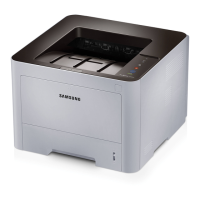
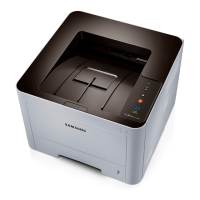


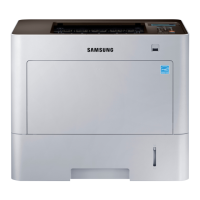



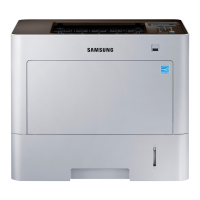
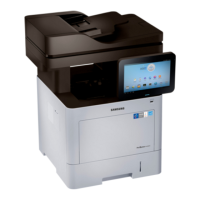
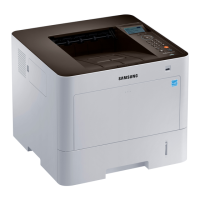
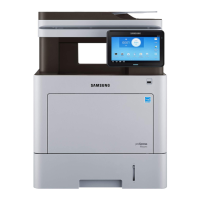
